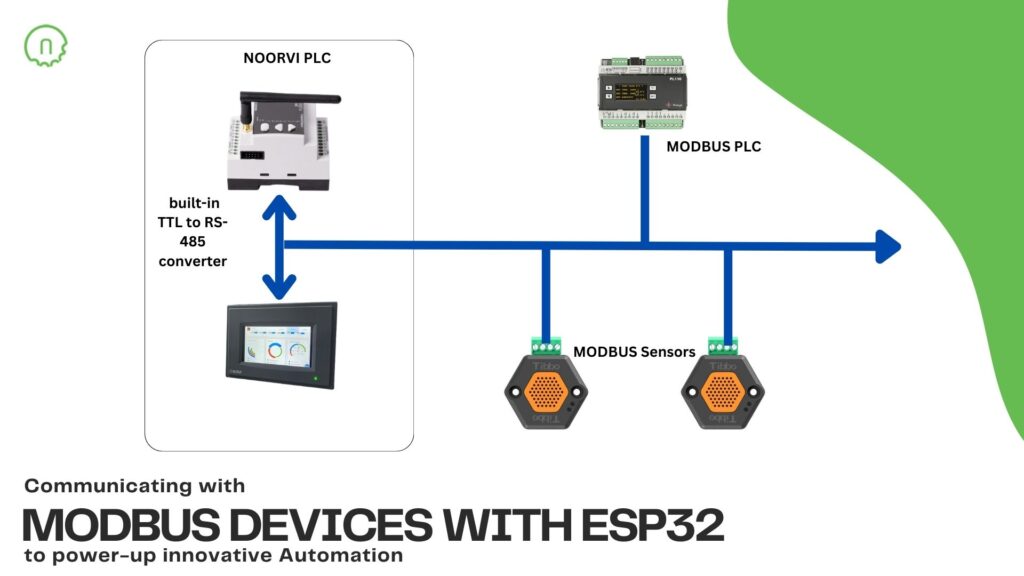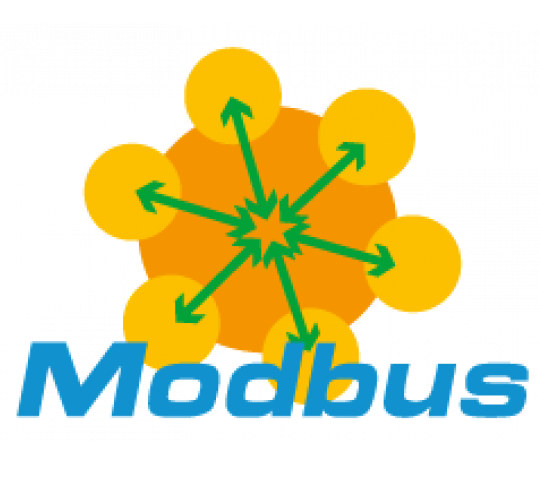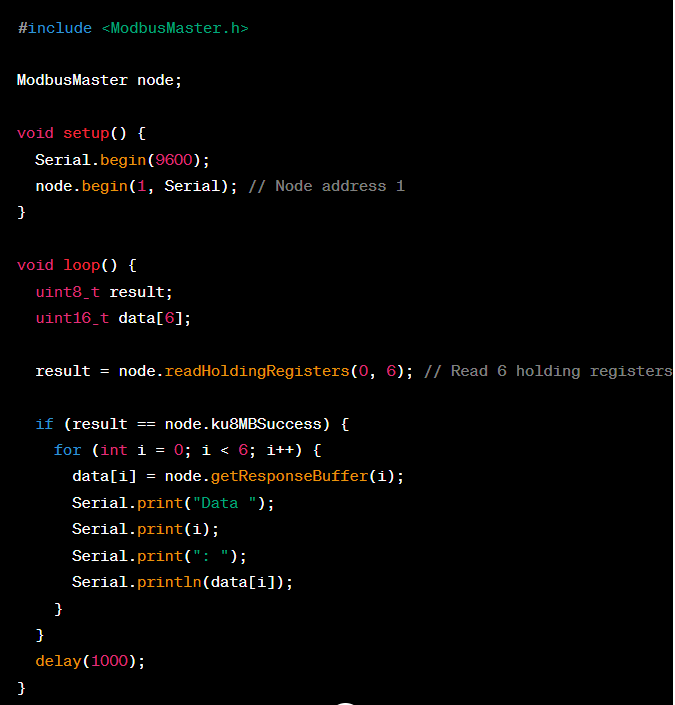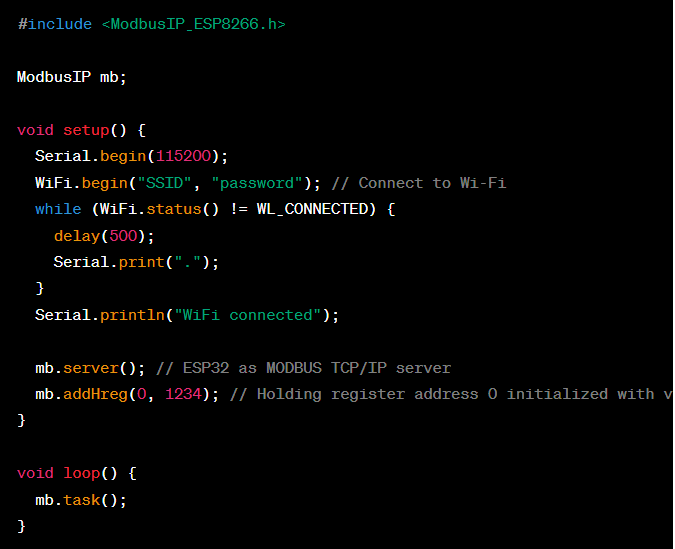
Learn how to unleash the power of industrial automation and IoT applications by leveraging MODBUS Devices with ESP32. Explore MODBUS RTU and TCP/IP protocols, hardware setups, and libraries for seamless integration. Discover why NORVI controllers stand out as a reliable MODBUS solution. Visit our product page for more details
Communicating via MODBUS Devices with ESP32 microcontroller opens up a world of possibilities for industrial automation, IoT applications, and control systems. MODBUS, a widely used communication protocol, allows various devices to exchange data straightforwardly and efficiently. The ESP32, with its powerful capabilities and built-in support for various communication protocols, provides an excellent platform to interface with MODBUS-enabled devices.
Understanding MODBUS Protocol

MODBUS is a serial communication protocol developed in the late 1970s for industrial applications. It has since evolved into a widely adopted standard for connecting electronic devices in supervisory control and data acquisition (SCADA) systems, industrial automation, and other applications.
The protocol operates on two main variants: MODBUS RTU (Remote Terminal Unit) and MODBUS TCP/IP (Transmission Control Protocol/Internet Protocol). RTU uses serial communication (RS-232 or RS-485), while TCP/IP operates over Ethernet networks.
MODBUS follows a client-server architecture, where a master device (client) initiates requests to read or write data to slave devices (servers). Each device in a MODBUS network has a unique address to enable communication.
MODBUS Devices with ESP32

The ESP32 is a powerful and versatile microcontroller equipped with Wi-Fi, Bluetooth, and various I/O interfaces. To communicate with MODBUS devices, the ESP32 can use its UART (Universal Asynchronous Receiver-Transmitter) for MODBUS RTU communication or its Wi-Fi module for MODBUS TCP/IP communication. Therefore, MODBUS Devices with ESP32 is vital.
Using ESP32’s UART for MODBUS RTU
- Hardware Setup:
- Connect RS-485 devices in multidrop to the RS-485 terminal of the NORVI Controller.
- Software Implementation:
- Utilize existing libraries like “ModbusMaster” or “Modbus RTU” for Arduino/ESP-IDF to handle MODBUS communication.
- Configure the ESP32’s UART pins and baud rate to match the settings of the MODBUS device.
- Implement read and write functions to communicate with MODBUS slaves using the chosen library.

Using ESP32’s Wi-Fi for MODBUS TCP/IP
- Wi-Fi Setup:
- Connect the ESP32 to the local Wi-Fi network to establish an internet connection.
- Library and Implementation:
- Employ libraries like “ModbusIP_ESP8266” or “ESP8266ModbusServer” adapted for the ESP32.
- Set up the ESP32 as a MODBUS TCP/IP server or client, depending on the application requirements.
- Implement read and write functions to communicate with other MODBUS devices over Wi-Fi.

Considerations and Best Practices
- Addressing: Ensure correct addressing of MODBUS devices to access specific data registers.
- Error Handling: Implement error handling mechanisms to manage communication failures or timeouts.
- Data Validation: Validate the received data to ensure integrity and accuracy.
- Security: Implement security measures, especially when using Wi-Fi, to prevent unauthorized access to the network and devices.
WHY NORVI as a MODBUS Solution?

Our NORVI controllers have built-in TTL to RS-485 converters.. So the RS-485 devices can be connected directly to the NORVI Controllers. RS-485 on the NORVI Controller can be used to communicate with external sensor networks and PLCs.
VISIT OUT Product Page Now: https://norvi.lk/products/
Conclusion
The ESP32’s flexibility and capabilities make it an excellent platform for interfacing with MODBUS-enabled devices. Whether using UART for MODBUS RTU or Wi-Fi for MODBUS TCP/IP communication, the ESP32 can efficiently handle data exchange, enabling seamless integration into various industrial and IoT applications. Understanding the nuances of the MODBUS protocol and leveraging appropriate libraries and configurations is key to successful communication between MODBUS Devices with ESP32, facilitating efficient control and monitoring in diverse settings.
